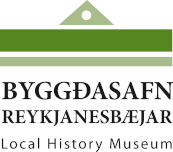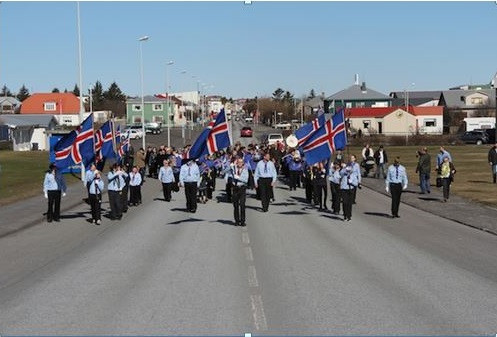Heiðabúar - The local scout group celebration of its 80th anniversary this year
Everything was ready and the journey began. The desire to see more, try more and to know more had been awaken.
The rough and unruly nature with its tranquil moments, was enchanting.
At the camping site there was this wonderful jolly spirit of like-minded people and the feeling to be trusted to take on some responsibility was enormously valuable.
This happened in the summer of 1937, there was a handful of young boys in Keflavík who longed to spend their time doing something exciting. They were in luck as Mr. Helgi S. Jónsson had just recently moved to the town. He was an experienced traveller in Icelandic wilderness and a scout. With him the boys explored their nearest neighbourhood. They loved it and were eager for more adventures and in turn the scout group Heiðabúar was founded on 15th of September in 1937. The name „Heiðabúar“ can be translated as „the moor dwellers“.
Helgi S. Jónsson became the first leader of the group and served for 35 years. He was adamant that the group should become a member of the Icelandic Scout Association (B.Í.S) and that the group should follow all traditions and regulations of the movement.
The group was successful in attracting new members and soon they needed to look for a suitable house. After several moves a decision was taken to build a house for the group. They got permission to build their house on the outskirts of the town and fortunately one of the founding member Mr. Gunnar Þorsteinsson was trained as a carpenter. He drafted the house and organized the work, which was all done by volunteers and the house was ready in 1947 when the group celebrated its 10 years anniversary. In 1976 an extension was added to the building.
In 1943 Gunnar got a new venture to be the first leader of the 3rd section that was for girls. Furthermore Heiðabúar were the first scout club in the world to allow girls and boys to be in the same group. The Icelandic Scout Association allowed it and many groups have since followed.
The scout‘s main goal is: „once a scout, always a scout“. As you get older other activities take over. However many find it difficult to leave the movement and were happy to continue in groups called the Guild of St. Georg, as the saint is the guardian angel of the movement. Here it is named St. Georg’s gildið in Keflavík and it was founded in 1963.
But what is the scout movement about?
The founding father of the movement was an Englishman named Robert Baden-Powell. Born in 1857 in a big family. His childhood memories were of him and his siblings exploring the neighbourhood of the family home, finding themselves in all kinds of adventures. When an adult Baden-Powell wished to share his happy childhood by inviting a group of boys to go camping.
The method that the movement has since developed is a program of informal education with an emphasis on practical outdoor activities, including camping, woodcraft, aquatics, hiking, backpacking, and sports. Another widely recognized characteristic of the movement is the Scout uniform, by intent hiding all differences of social standing in a country to ensure equality. Distinctive uniform insignia include the fleur-de-lis and the trefoil, as well as badges and other patches.
The First Day of Summer and the National Day of Iceland.
There is a long tradition in Iceland to celebrate the First Day of Summer. This day marks the beginning of the first summer month in the old tradition called Harpa, literally „the harp“. This day is always on the third Thursday in April and is still an official holiday. The scout movement has traditionally participated in celebrating this day, by parading the streets and with various other activities in coherence with the scout traditions.
17th of June is the National Day of Iceland. Which has been celebrated since 1944 when Iceland became a republic. The scout movement has always participated in the celebration. Heiðabúar have been in the forefront in developing the day. Heiðabúar lead the parade with the brass band of the local music school, entering the public garden in centre of the town, carrying the huge Icelandic flag which is the largest one in the country. The first flag which was used during 1945-1974, is now preserved in the local heritage museum, when measured it is 5.65x4.00 meters, “Just like a good size garage” as one of the museum staff noted.

